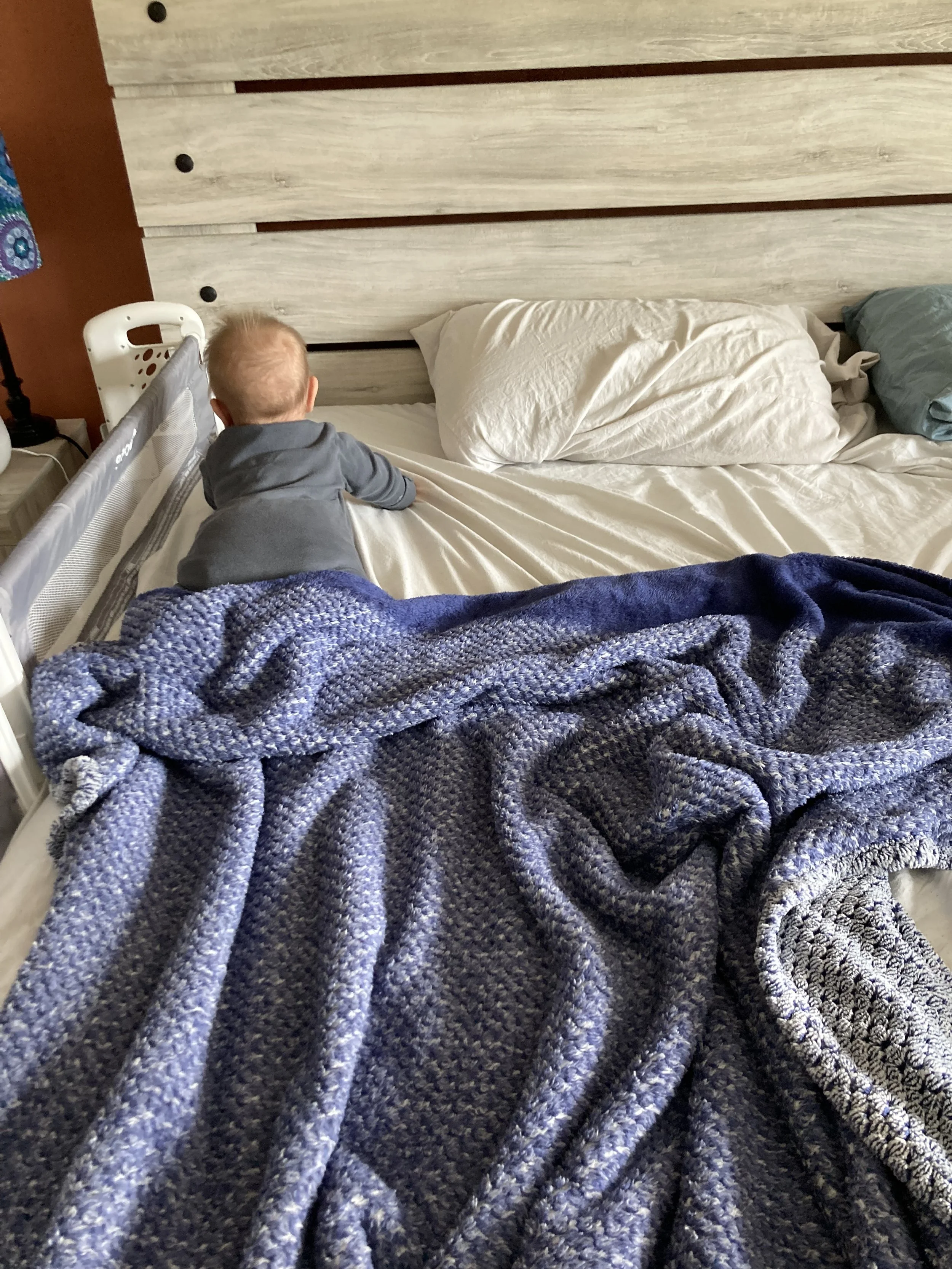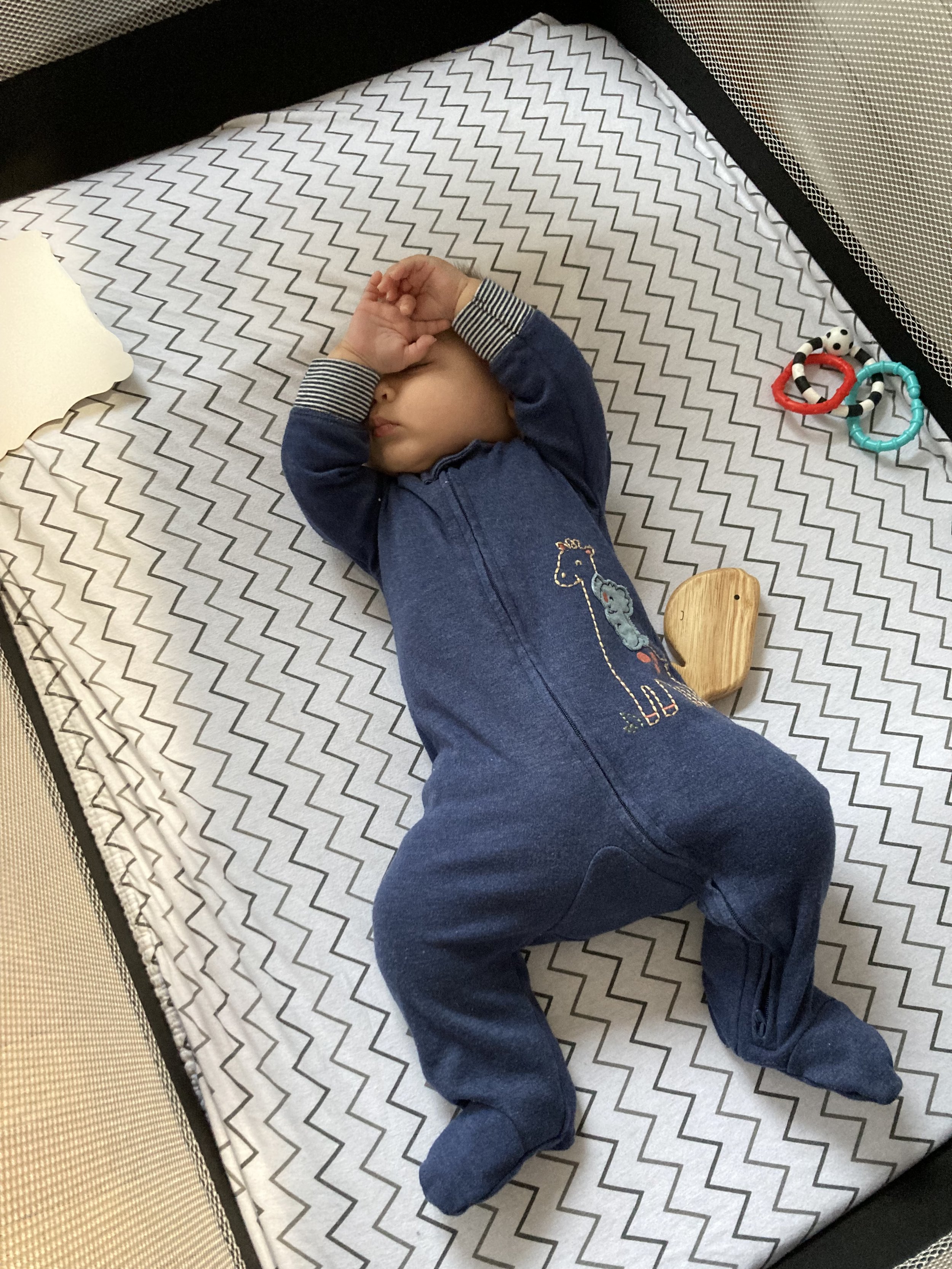The Safe 7
Cosleeping is practiced all around the world, giving mother and baby some much needed sleep. In America it is often condemned, due to the risk of SIDS, which includes sudden unexplained death (sadly not preventable no matter the sleeping surface), as well as suffocation (which can be prevented). However, the work of organizations and individuals like La Leche League and Dr. James McKenna have enabled co-sleeping to be practiced safely to the benefit of parents and baby. After all, babies are wired to desire to be close to their mothers--we are their source of food, comfort, safety--essentially everything. These seven safe cosleeping rules allow a prepared cosleeping surface preventing the unsafe situations tired parents and babies (up to 75%) fall into every day.
Non-Smoker
If you decide to cosleep, it is important that neither you nor any other adults in the room with the baby smoke. This doesn't just mean no smoking while baby is in the room, but no smoking whatsoever, to eliminate the chance of secondhand smoke. This reduces the risk of SIDS, and it also reduces the baby's risk of pneumonia, bronchitis, and other respiratory ailments.
Sober and Unimpared
A safe cosleeping space starts with those in it. Just like adults needing to refrain from smoking, all adults in the family bed should remain sober and unimpaired. This ensures they maintain awareness of the baby, know their sleep is not too deep, and remain capable of caring for their baby.
Breastfeeding
A breastfeeding infant/mother form a dyad that revolves around the breast. Baby will naturally gravitate to the mother's chest and remain there throughout the night, staying in a safe position (2). This also brings us to the topic of the cuddle curl. The breastfeeding parent should curl their body around their baby, providing a protective barrier between the baby and anything else in the bed: partner, pillow, etc. A single pillow above their arm is ok, as is a blanket that remains below hip level. The blanket can be tucked into the bottom of the bed, or under feet, or a sleeping bag can be used to keep the blanket even farther away. The curl makes side-lying breastfeeding a breeze and can be done in either direction to switch breasts.
Our safe sleep set up is shown here—over the bed bedrails that have no gaps baby can fall into and suffocate, no gaps between mattress and headboard, a single pillow and light blanket at hip level. I would normally curl around where Juju is, and he would normally be on his back! (He is on his tummy for photo purposes, as I don’t show his face on social).
Healthy and Full Term
Baby should be healthy and full term. Now more than ever, more babies are being born with underlying conditions and pre-term. These 7 guidelines are suggested to reduce and lower risk--but every family must make the decision that's right for them while in consult with trusted professionals and mentors. My son was a preemie, so I waited and used a bedside bassinet until he reached a weight and date closer to full term.
On Their Back
This is a tricky one. Though babies can be put to sleep on their back they are prone to filliping as they wish. The very position of sidelying nursing may require baby to turn on his side towards you and the breast--which does itself give a level of protection as baby is preventing from falling into too deep a sleep by nursing. Otherwise, though, baby should always be placed on their back for the safest sleep. My baby just loves sleeping on his side, but sleeping close to me prevents him from ever turning (as of yet) onto his stomach.
Lightly dressed
Both you and your babe should be lightly dressed. You will share body heat, as well as the heat the mattress traps, and this will keep you warmer. Reducing overheating is key to reducing SIDS risks, and keeping your baby dressed in a light foottie, or even a onesie during the summer, can be protective given the added heat of your own body. Make sure whatever you are wearing will not entangle the baby or get in his face. I've found nursing bras to be helpful in summer and tight henleys in the winter. T shirts and nursing shirts are too baggy and these two alternatives prevent leaking along with keeping you cool/warm.
On a safe surface
Baby must absolutely never sleep in a recliner or a sofa--babies can fall into gaps or sink into cushions. Instead, they should be on a firm mattress that they do not sink into and cannot roll into the depression that an adult lays in. Water, airbeds, or sheepskin mattresses should never be used as these surfaces cannot ever be firm enough.
In conclusion, I followed the safe 7 but needed to read a large amount of resources and experiences to feel comfortable in bed sharing. At the end of the day, Dr. McKenna's work made me feel most comfortable, along with a SIDS risk calculator, which I'll link below. I discovered that after 4 months, the difference between a bedside bassinet and cosleeping became very similar for my families circumstances. However, your kids may just surprise you where they play and fall asleep after cosleeping gives them the confidence to know you are always nearby.




